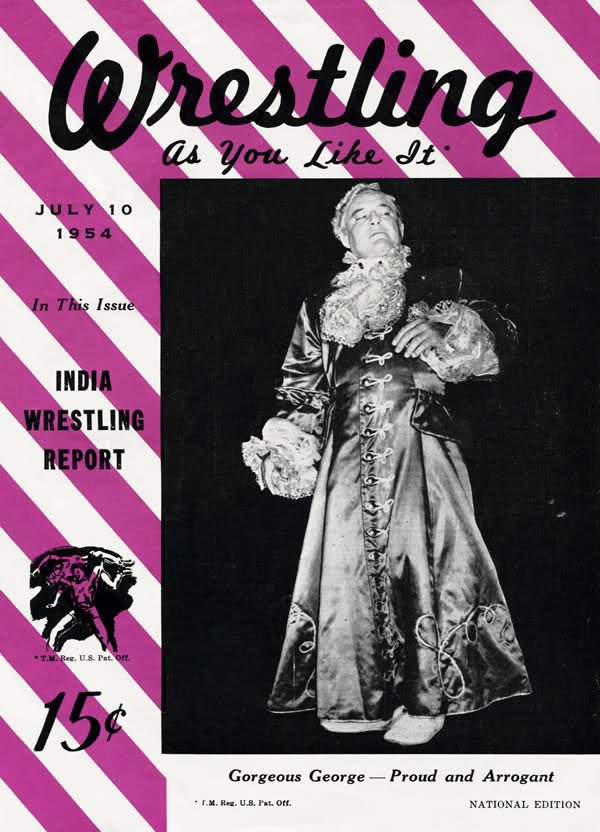Time now to look at one of the biggest stars of wrestling: a man who had the crowds booing, hissing and paying to see him in the ring and on TV.
I am of course talking about Gorgeous George...
I am of course talking about Gorgeous George...

George Raymond Wagner was born in Nebraska in 1915. Age 17 he was paid 35 cents to wrestle at a carnival. When his amateur wrestling coach found out he kicked him out, furious that he was now a "professional wrestler." 

Wagner was 'only' 5ft 9in tall and weighed 215 pounds, but he was athletic and technically solid. By 1938 he had won his first title. 

But what transformed Wagner's career - indeed the whole sport of pro wrestling - was 'Lord' Patrick Lansdowne, a wrestler with an amazing gimmick: he entered the ring accompanied by two valets while wearing a velvet robe and doublet. He wanted a crowd reaction, and he got it! 

Wagner took Lansdowne's idea of a pre-match performance and turned it up to 11. In 1941 he died his hair platinum blonde, wore elaborate capes and baited the crowd. Gorgeous George was born... 

No one had seen anything quite like it: he would enter the arena to his own theme music - Pomp and Circumstance - along with a butler who sprayed the ring with perfume. A purple spotlight would follow Gorgeous George, reflecting off the gold bobby pins in his platinum hair. 



Gorgeous George's showmanship was heaven sent for TV sports, which had begun to see pro wrestling as a lucrative - and easy to televise - opportunity. Now they had an outlandish star that the public loved to hate to help draw in the viewers. 



But Gorgeous George could also wrestle: he won the American Wrestling Association World Title in 1950 and soon became one of the highest paid stars of the sport. 

He also made it into movies, starring in the 1949 film Alias The Champ as a wrestler who wouldn't knuckle under to the New York Mob. 

George retired from wrestling in 1962 to become a gentleman farmer in Beaumont, promoting his own range of turkeys and running his own restaurant. 

Over the years many other wrestlers have emulated the showmanship and swagger of Gorgeous George Wagner. He set the template for what a bad boy wrestler should be: haughty, proud, outrageous and dazzling. 

So let's hear it for Georgeous George: the Golden Age wrestler with the platinum wave. Pulp salutes you sir - now let's get ready to rumble... 

• • •
Missing some Tweet in this thread? You can try to
force a refresh























